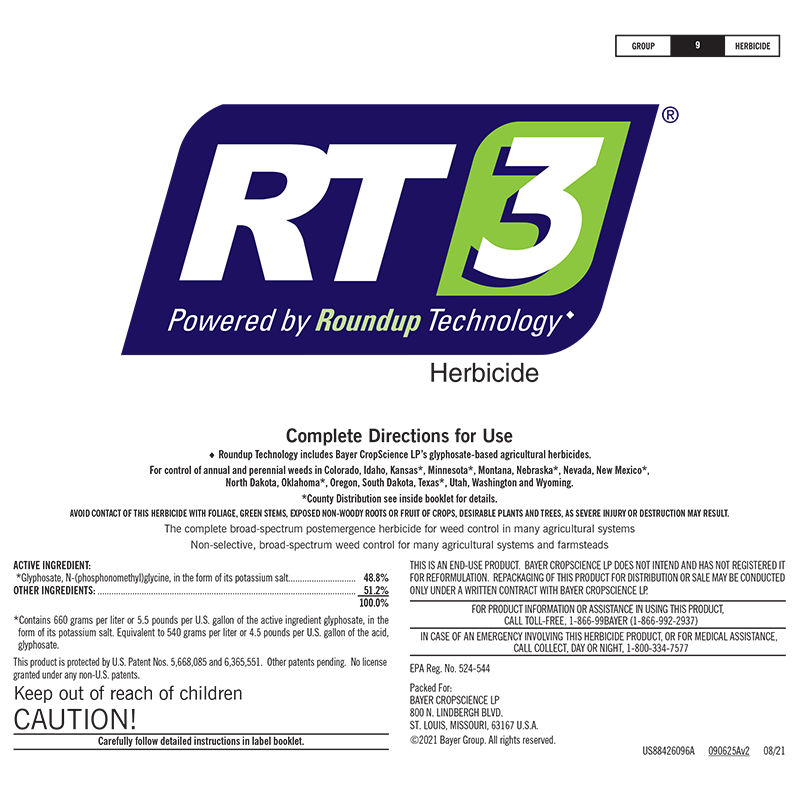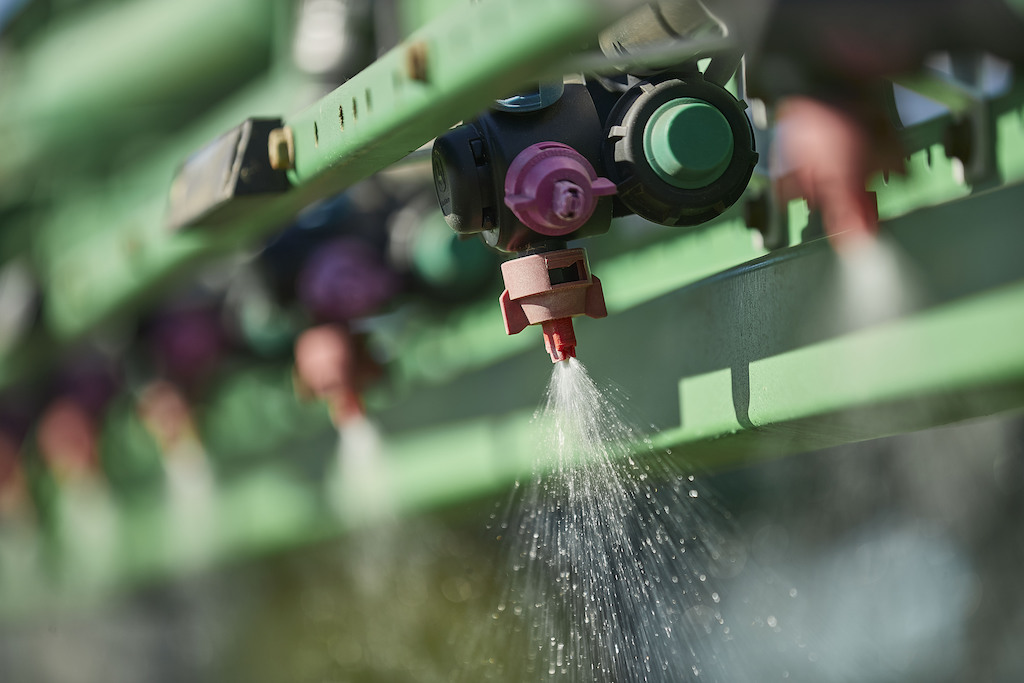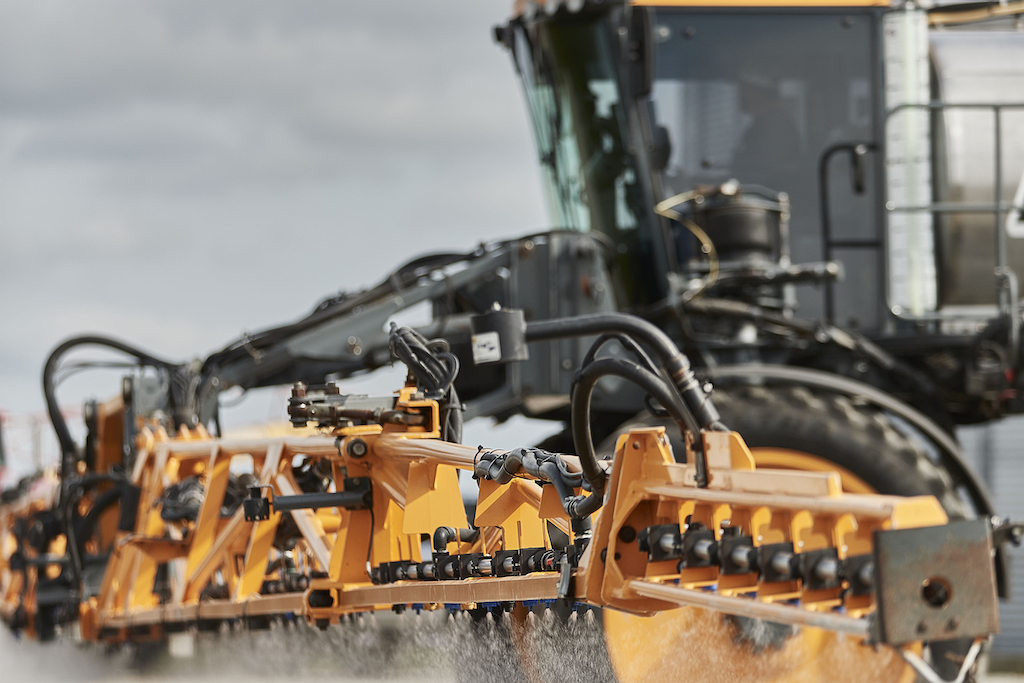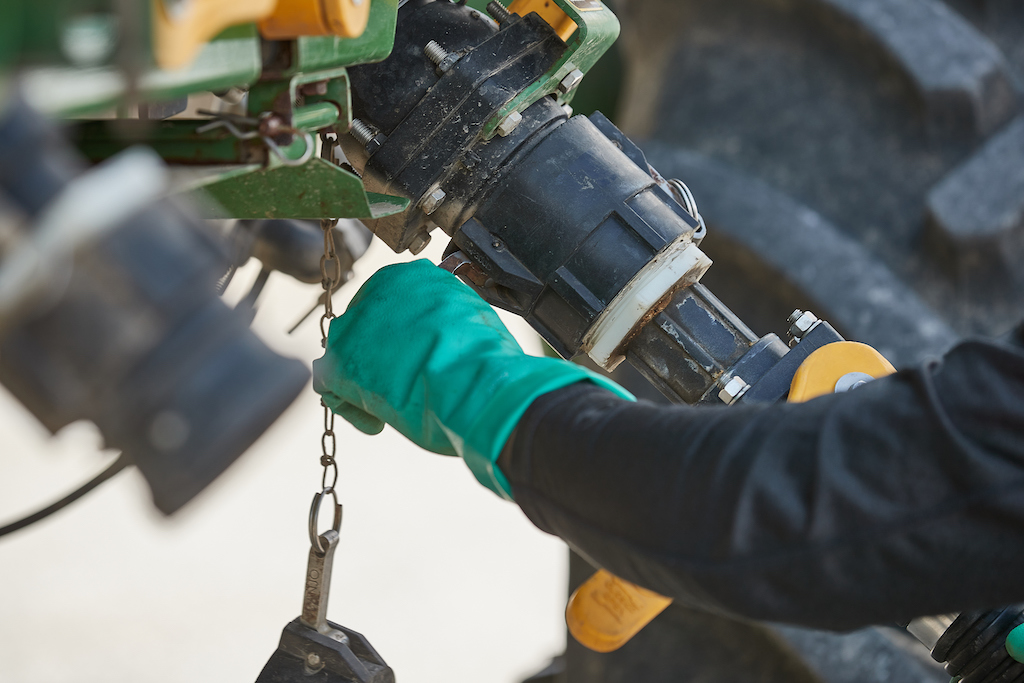RT 3 Herbicide
HerbicideRT 3® herbicide contains up to 50 percent higher glyphosate concentration than most generics to control more acres per gallon. RT 3 herbicide has shown reliable, consistent performance on tough-to-control weeds, such as non-glyphosate resistant Russian thistle and kochia.
Approved In
CO, IA, ID, KS, MN, MT, ND, NE, NM, NV, OK, OR, SD, TX, UT, WA, WY
Labels / Safety Data Sheets (MSDS)
RT 3 HERBICIDE Label
RT 3 HERBICIDE MSDS - Spanish
RT 3 HERBICIDE MSDS - English
Effective Against
Our portfolio has products to fight a variety of weeds, pests and diseases.
Cheatgrass
Kochia
Marestail
Russian Thistle
Volunteer Wheat
Registered Crops
Our products are available for use on a variety of different crops.
checkcorn field
checkcorn production seed
checkcorn sweet
checkgrain sorghum
checkpopcorn
checksilage corn
